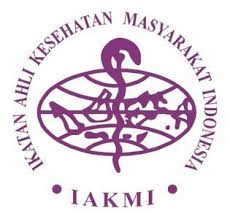Kejadian Phlebitis di Rumah Sakit Umum Daerah
Abstract
Abstrak
Phlebitis merupakan komplikasi pemasangan infus. Jumlah kejadian phlebitis di RSUD Ungaran tahun 2018 sebanyak 416 kasus (3,4%), dan tahun 2019 bulan Januari sampai Juli sebanyak 130 kasus (3,34%). Tujuan penelitian adalah untuk mengetahui faktor yang berhubungan dengan kejadian phlebitis di RSUD Ungaran. Jenis penelitian adalah observasional analitik dengan studi kasus kontrol. Jumlah sampel 37 kasus dan 37 kontrol dengan teknik consecutive sampling. Penelitian dilakukan di RSUD Ungaran pada bulan Agustus 2019. Data analisis dengan uji chi square menggunakan perangkat SPSS. Hasil menunjukkan bahwa jenis kelamin (p=0.033; OR=3,176; 95% CI=1,202-8,395), riwayat penyakit (p=0,044; OR=3,265; 95% CI=1,144-9,319), ukuran jarum infus (p=0,039; OR=3,523; 95% CI=1,181-10,510), jumlah insersi (p=0,036; OR=3,056; 95% CI=1,180-7,909), lama pemasangan infus (p=0,017; OR=3,660; 95% CI=1,359-9860), persepsi responden tentang teknik aseptik pemasangan infus (p=0,014; OR=4,060; ; 95% CI=1,428-11,547), dan frekuensi pergantian balutan infus (p=0,005; OR=4,563; 95% CI=1,683-12,371) berhubungan dengan kejadian phlebitis. Kesimpulan penelitian ini adalah variabel frekuensi pergantian balutan infus mempunyai pengaruh lebih besar terhadap kejadian phlebitis.
Kata kunci: Faktor Risiko, Phlebitis, Infus
Abstract
Phlebitis is complication of infusion. The number of phlebitis in the Ungaran General Hospital in 2018 was 416 cases (3.4%), and in 2019 from January to July there were 130 cases (3.34%). The purpose of this study was to determine the factors associated with phlebitis. This type of research is observational analytic with case control study. Samples was 37 cases and 37 controls by consecutive sampling technique. This research was conducted at Ungaran General Hospital in August 2019. Data were analyzed using chi square test with SPSS. The results showed that gender (p=0.033; OR=3,176; 95% CI=1,202-8,395), history of disease (p=0,044; OR=3,265; 95% CI=1,144-9,319), infusion needle size (p=0,039; OR=3,523; 95% CI=1,181-10,510), number of insertions (p=0,036; OR=3,056; 95% CI=1,180-7,909), duration of infusion (p=0,017; OR=3,660; 95% CI=1,359-9860), respondents perceptions about aseptic techniques (p=0,014; OR=4,060; 95% CI=1,428-11,547), and the infusion dressing frequency (p=0,005; OR=4,563; 95% CI=1,683-12,371) related to the incidence of phlebitis. The conclusion is the infusion dressing frequency variable has a greater influence on the incidence of phlebitis.
Keywords: Risk Factors, Phlebitis, Infusion




